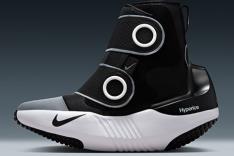
You've probably heard that the offseason is a great time for triathletes to start strength training, or to pick it back up again. But why is it important and where do you start? Here Dave Scott answers these questions and provides six exercises to get you started.
Why is strength training important in the offseason?
Dave Scott: As a season progresses, and an athlete's strength level increases, they tend to develop dominant muscles while the support muscles get neglected. When you neglect those smaller muscles, they start to shut down. So even though someone's performance is going up, athletes are always hovering on the brink of injury. Athletes should work on both the small muscle groups and the larger muscle groups to help create balance.
If they keep repeating the same patterns—up their training, tack on more volume and increase intensity—but they don't do supplementary strength training, that window of vulnerability goes up even more. And that just gets exacerbated as the years go by.
I'm a stickler for strength training year-round. And the offseason is the prime time to set that fundamental foundation for endurance athletes.
More: 3 Reasons to Strength Train in the Offseason
What are the most vulnerable areas for triathletes?
DS: One of the hot spots for triathletes (and runners and cyclists too) is the hip/glute complex. The glutes are the dominate muscles that generate the power and take a lot of the load, and the quad side often becomes overdeveloped. There are a lot of smaller muscles intricately overlaid in the butt and hip area that allow your hip to extend, flex, and rotate—those muscles should be addressed.
Another vulnerable spot is the core. The core extends from the base of your ribs all the way down through your abdominals, pelvic girdle and upper quad. It's the same thing on the back side—from your upper hamstrings and glutes to your low and mid back. Those core muscles really help generate the power out of your quads. The whole core is made up of about 26 muscles front and back; if all of those muscles are working harmoniously you are obviously going to be more efficient.
Finally, it's common to see athletes with internally rotated shoulders. Over time, your pecks get a little bit tighter and, since your pecks are attached to your humerus bone, that draws your shoulders inward. When you look at an athlete running, you want to see a smooth, flat back, which is difficult if the support muscles of the upper back and the mid back are really weak.
More: Mark Allen's 12 Best Strength Training Exercises
So where should triathletes start?
DS: When you start the offseason strength training program, you don't want to gravitate to the major muscle movements. You really want to hit the smaller ones first. These should also be done at a slightly slower movement rate to help work on stability, balance and strength simultaneously. You really want equal musculature, equal tendon strength and equal connective tissue strength on both sides. It's pretty rare—even with the best of the best.
Through it all, think about sitting (or standing) tall—like you should on a bike: You always want to keep the space between your ribs and your hip bone open. Core stability is what helps support your spine allowing you to sit and stand tall instead of slouching.
Think about when you do a squat: Your back should be square and flat, toes out a bit, shoulder blades retracted, neck neutral. This is the basic position for athletes in any sport because it offers the greatest base of support. It's the most stable and will generate the most strength. If you are long—and your hips are high and your ribs are high—that's the ideal position, not only on the bike but swimming and running too.
It's easy, in a race when the intensity and stress is high, to fall back and slouch a little bit. So I'd start the exercises with the upper backs/mid traps.
- 1
- of
- 2
About the Author

Get ACTIVE on the Go


Couch to 5K®
The best way to get new runners off the couch and across the finish line of their first 5K.
Available for iOS | Android







Discuss This Article